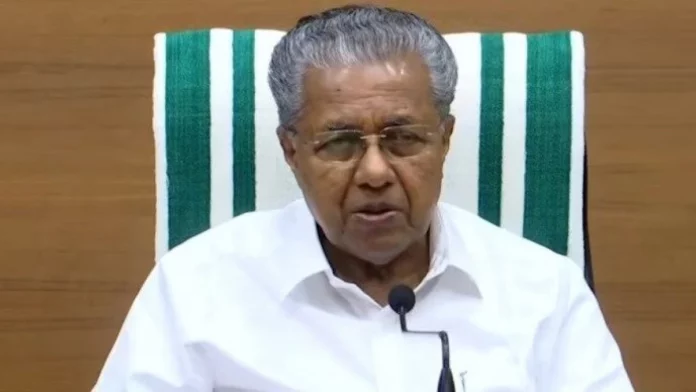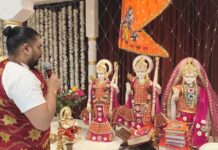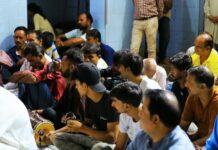The Kerala assembly recently passed a unanimous resolution, saying that we do not want to call our state as Kerala but by the new name. Hence, Chief Minister Pinarayi Vijayan submitted letters to central Government and Prime Minister requesting the Central Government to change the name of the state to “Keralam” in the Constitution’s Schedule,1, 8 and other documents, where it is currently written as Kerala. The argument raised was that Keralam is the accepted usage in Malayalam, while it has been recently and in other languages referred to as Kerala. People from Kerala always call it as Keralam but in English language and while forming constitution, it has been mentioned as Kerala.
Schedule 1 of the Indian constitution contains the list of states and union territories and their extent and territorial jurisdictions. The Eighth Schedule to the Constitution consists the official languages. Article 3 of the Indian constitution addresses the formation of new states as well as any changes or modifications to existing states’ names, boundaries, or areas. The article gives authority to the Parliament to change the area, boundaries, or names of existing states in accordance with the law.
The word Kerala has no meaning in Malayalam language but the term Keralam has a meaning. Here the etymology derives Keralam from the Malayalam word Kera ‘coconut tree’ and Alam ‘land’; thus, ‘land of coconut trees’. Kerala Government therefore asking the Central Government to call their state as Keralam going forward. This idea of changing Kerala state’s name came from the former Chief Minister of Kerala (2006 to 2011) Velikkakathu Sankaran Achuthanandan in 2010 but it was not officially presented in the state assembly. Now Pinarayi Vijayan is completing that official process. Kerala has already changed the names of some cities as Calicut to Kozhikode, Trichur to Thrissur and now they have decided to change the name of the state itself.
Kerala is on the India’s tropical Malabar Coast and has early 600km of Arabian Sea shoreline. It is bordered by Karnataka to the north and northeast, Tamil Nadu to the east and south. As per the 1956 States Reorganisation Act, Kerala state was formed by the merger of Travancore-Cochin and Kasaragod taluk of South Canara district of the Madras Presidency. Keralais spread over 38,863 km2 (15,005 sq. mi), and is the 21st largest Indian state by area and has population of 3.56 crores and is the thirteenth-largest state in India by population. It is divided into 14 districts with the capital being Thiruvananthapuram. Malayalam is the commonly spoken language in the state of Kerala. Kerala comprises of Hindus (54.73%), Muslims (26.56%), and Christians (18.38%), others (0.33%).
The Cheras started international trade by establishing trade relations across the Arabian Sea with all major Mediterranean and Red Sea ports as well those of Eastern Africa and the Far East. That is how India had trade relations with Arab, China and Rome. Kerala’s spices attracted ancient Arabs, Babylonians, Assyrians and Egyptians to the Malabar Coast in the third and second millennia BCE. The Periplus Maris Erythraei (an early Greek manual of sailing directions written in the 1st century ad,) describes how Indian trade reached Europe.Kerala is first mentionedas Keralaputra in a 3rd-century-BCE rock inscription left by the Mauryan emperor Ashoka. At that time, one of three states in the region was called Cheralam in Classical Tamil:The word Cheral refers to the oldest known dynasty of Kerala kings and is derived from the Proto-Tamil-Malayalam word for ‘lake.’Keralam may stem from the Classical Tamil cherive-alam ‘ Chera alam means’land of mountain slope’.
We find reference of Kerala in Vedas. A ‘hymn’ where Chera Nadu is mentioned in the Rig Veda. In Aitareya Aregam, Kerala is called Cherapad. Kerala is also mentioned in Ramayana and Mahabharat. In Jaimini Bharat Kerala is described as the kingdom of beautiful women that haunted Arjun was this land only. In Skanda Purana, we also find Kerala’s reference. Kerala is also known as the country of Parasuram. Historical evidences are found in Waynad such as the carvings in the caves of Yedakallu Guddada Mele that show people were residing in this region several thousand years ago and Ancient dolmens and rock paintings in Marayoor date back to the Stone Age. There is an authentic habitation site dating to Neolithic/ Megalithic reported/excavated within the boundaries of Marayoor region. It has a history that dates back to the Stone Age civilization that is as old as 10,000 B.C.E. Greeks called Kerala as Selabotra, Arabs RecognizedKerala as Malabar or Male. In Malayalam Male means hill. In 1017, Al Biruni travelled to the Indian subcontinent and wrote a treatise on Indian culture entitled Tārīkh al-Hind (The History of India), after exploring the Hindu faith practiced in India. Other Arab traders called Kerala as Malabar or Munibar.
Cheraman Juma Masjid is the first mosque to be built in India. It is a popular pilgrim canter in Kodungallur in Thrissur district. Slowly Islam started spreading in Kerala. The king Deva Raya II (1424–1446) of the Vijayanagara Empire conquered (Kallikot and Kollam) about the whole of present-day state of Kerala in the 15th century. As the Vijayanagara power diminished over the next fifty years, the Zamorin of Kozhikode again rose to prominence in Kerala He built a fort at Ponnani in 1498. Later, Europeans started entering India with the discovery of Sea route from Europe to India by Vasco da Gama. After Vasco Da Gama’s arrival in Kallikot in 1498, the Portuguese began to dominate eastern shipping and the spice-trade in particular. After this, British, Dutch, and French started coming in and British took over the control over the region with the help of Travancore ruler. By 1800, most of Kerala’s region went under Madras province control under British rule except Travancore and Kochi. On July 1, 1949 they joined Indian Union and later formed Kerala state by taking some areas of Madras province namely Dakshina Kannada and other areas. Until now, it is recognized and mentioned as Kerala even in the Schedule 1 of Indian Constitution.
Kerala is always referred to as God’s own country. Kasaragod is merged with Kerala even though it has lots of Kannada speaking people. Shabarimale, Guruvayur, Anantha Padmanabha and many more temples are there. Now Kerala is facing communal tensions even though majority are Hindus. Kerala has highest literacy rate. Kerala has less industrialization and business firms due to communism but it is giving rise to more communal conflicts and riots.
Now, Kerala Government is going to change its name to Keralam soon as some states and cities have changed their names such as Mysore state changed its name to Karnataka State, Central Province to Madhya Pradesh, and Madras State to Tamil Nadu, Bombay to Mumbai, Madras to Chennai, Banaras to Varanasi, Calcutta to Kolkata, Cochin to Cochi, Pondicherry to Puducherry, Allahabad to Prayaga and many more.
Geetha Patil







